SLS 3D Printing Service
Selective Laser Sintering (SLS) 3D printing makes it easy to get high-quality parts for prototyping and production. Choose from industrial-grade materials and a wide range of surface finishes. Our standard lead time is just 3 working days.

What is SLS printing?
Selective Laser Sintering (SLS) is an industrial 3D printing process that is ideal for producing end-use parts. In SLS, a laser selectively sinters polymer powder particles, fusing them together to build a part layer by layer. With some of the largest print beds, SLS machines can produce functional plastic parts with isotropic mechanical properties for detailed prototyping or low-volume production of end-use parts. SLS is a cost-effective production method that our customers regularly choose for the most complex parts and those requiring extensive customisation.
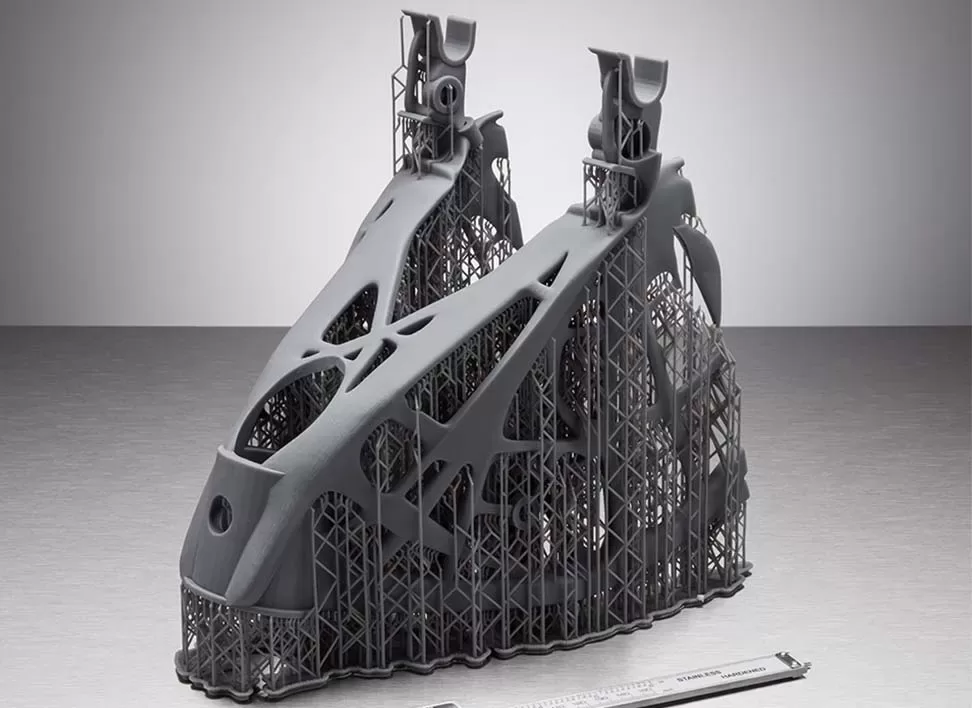
SLS capabilities
Selective Laser Sintering (SLS) is a 3D printing technology that uses a high-powered laser to selectively fuse powdered material, typically plastic or nylon, to create solid, three-dimensional objects.
| Maximum build size | Standard lead time | Dimensional accuracy | Layer thickness | Minimum feature size |
|---|---|---|---|---|
| 395 x 500 x 395 mm (15.53" x 19.68" x 15.53") | 3 business days | ± 0.3% with a lower limit of ± 0.3 mm (± 0.012 in) | 100μm | 0.5 mm (0.0196”) |
SLS Materials
SLS 3D printing uses robust powder materials that are ideal for functional prototyping and low to medium volume production of end-use parts.
| Material | Color | Resolution | Tensile Strength | Elongation at Break | Heat Deflection Temperature | Application |
|---|---|---|---|---|---|---|
| Nylon (PA 12) | White, dyed black | 100 μm | 41-50 MPa | 11-36% | 146-180 °C | Prototypes, detailed and complex parts, fully functional models, and end products. |
| Glass-filled Nylon (PA 12)(US only) | Off-white | 100 μm | 30-48 MPa | 6.3-9.3% | 152-179 °C | Enclosures and housings, jigs, fixtures, tooling |
SLS Surface Finishing
Improve the mechanical properties and aesthetic features of your SLS 3D printed parts with these post-processing options.
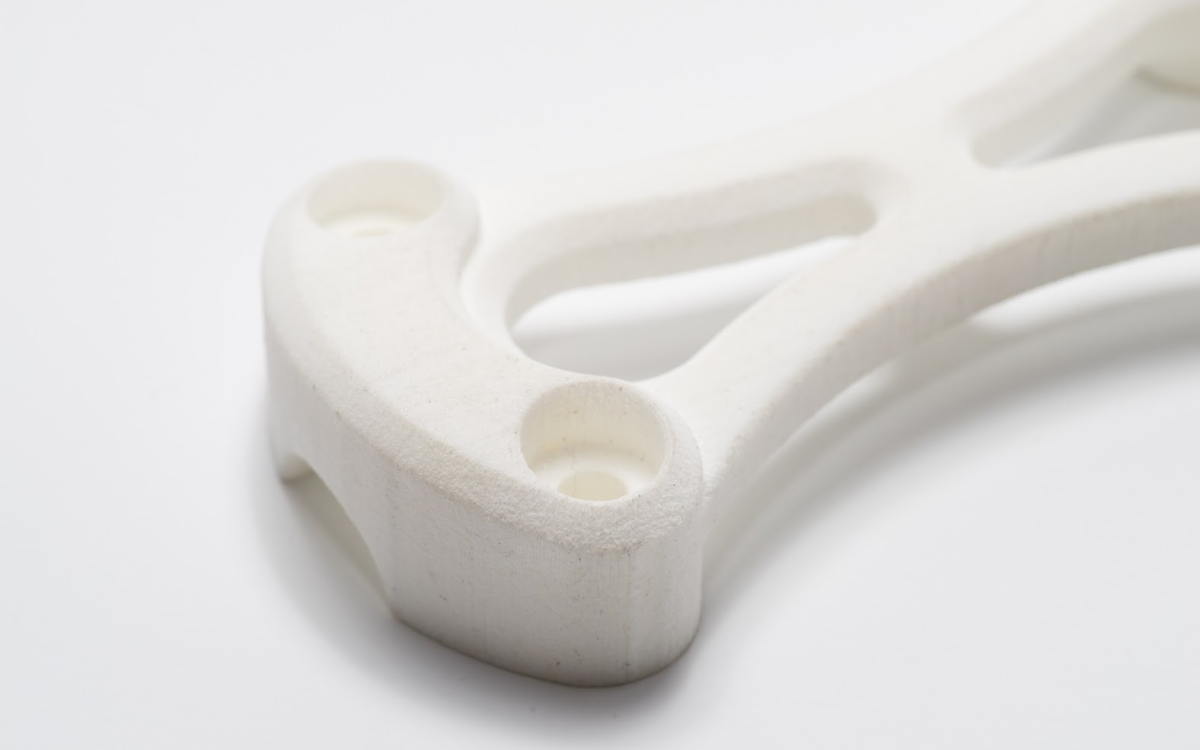
As printed
Typically white or stone grey, smooth surface, powder texture, no visible layers.
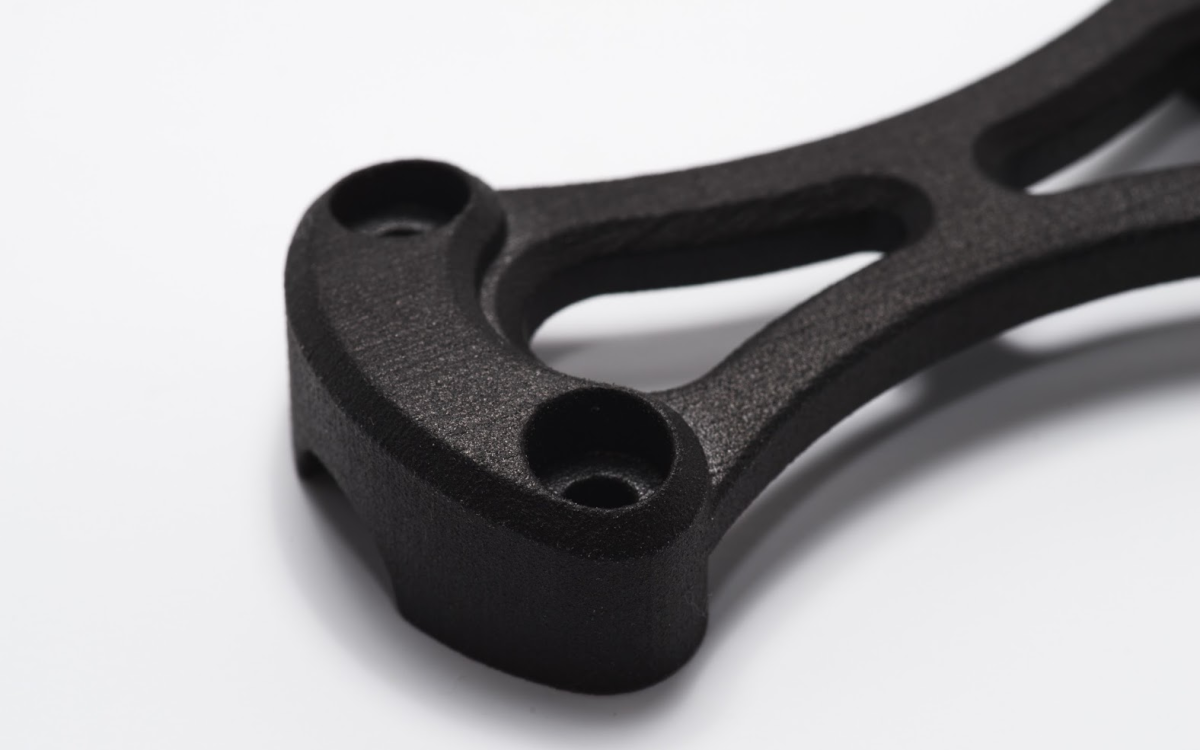
Dyed (black)
Dyed black by immersion in a warm dye bath. The colour penetrates to a depth of approximately 0.5mm and covers all surfaces.
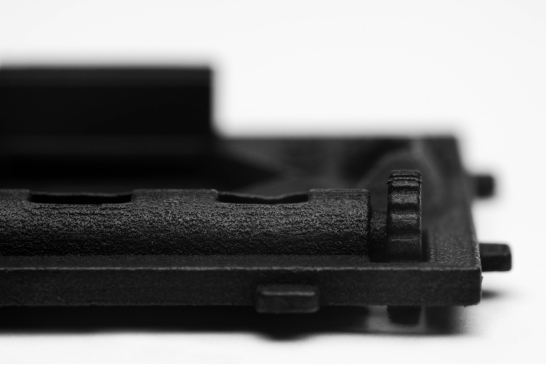
Tumbling
Parts are placed in a tumbler containing small ceramic chips which gradually erode the surface to a polished, injection moulded finish.
How SLS stacks up against other 3D printing technologies
| Dimensional accuracy | Strengths | Build volume | Layer thickness | Min. feature size | |
|---|---|---|---|---|---|
| FDM | ± 0.5% with a lower limit on ± 0.5 mm | Low cost, wide range of materials | 500 x 500 x 500 mm (19.68" x 19.68" x 19.68") | 100-300μm | 2.0 mm (0.0787'') |
| Industrial FDM | ± 0.25% with a lower limit: ± 0.25 mm (± 0.010") | High level of repeatability, engineering grade materials | 406 x 355 x 406 mm (15.98” x 13.97” x 15.98") | 100-330μm | 2.0 mm (0.0787'') |
| Prototyping SLA | ± 0.5% with a lower limit of ± 0.15 mm (± 0.006")/ | Smooth surface finish, fine feature details | 145 × 145 × 175 mm (5.7" x 5.7" x 6.8") | 50-100μm | 0.2 mm (0.00787'') |
| Industrial SLA | ± 0.2% with a lower limit of ± 0.127 mm (±0.005") | Smooth surface finish, fine feature details, big print area | 500 x 500 x 500 mm (19.68" x 19.68" x 19.68") | 50-100μm | 0.2 mm (0.00787'') |
| SLS | ± 0.3% with a lower limit of ± 0.3 mm (± 0.012”) | Design flexibility, supports not required | 395 x 500 x 395 mm (15.53" x 19.68" x 15.53") | 100μm | 0.5 mm (0.0196”) |
| MJF | ± 0.3% with a lower limit on ± 0.3 mm (0.012'') | Design flexibility, supports not required | 380 x 285 x 380 mm (14.9'' x 11.2'' x 14.9'') | 80μm | 0.5 mm (0.0196”) |
Manufacturing standards for SLS 3D printed parts
We manufacture your custom parts to strict manufacturing standards, ensuring that all parts and processes comply with the V1 standard. A thorough review of these requirements is included in our inspection report that we send with every order.
- After printing, parts are bead blasted and then air blasted to remove excess powder from the surface.
- Additional finishing can be applied to improve the appearance of the part, such as dyeing, steam smoothing or tumbling.
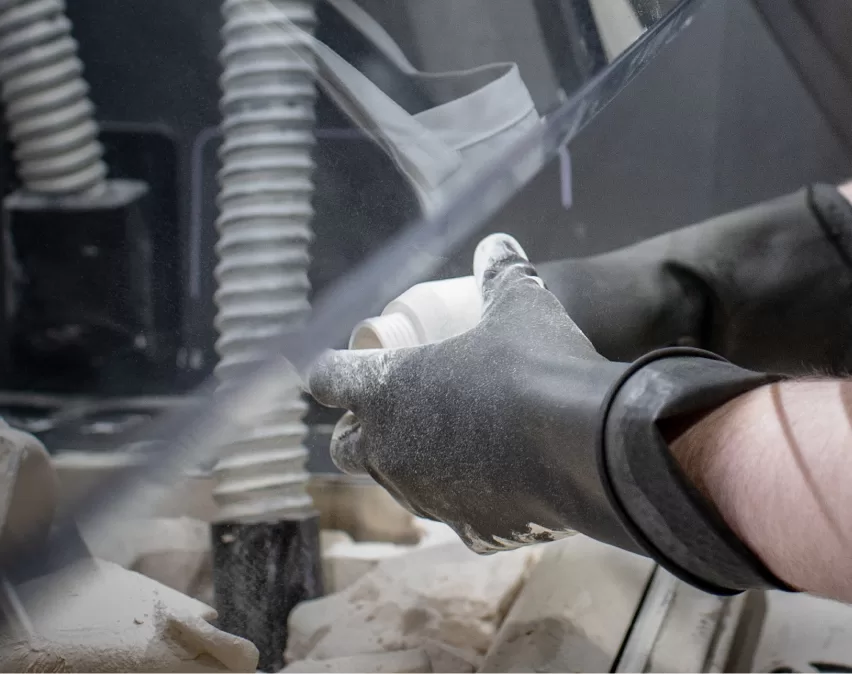
Advantages and drawbacks of SLS 3D printing
Overall, SLS printing is suitable for low-volume production and prototyping, and can print functional components and technical plastic products. However, it has a slower print speed, requires significant post-processing for surface finishing and has limitations on the maximum print size.
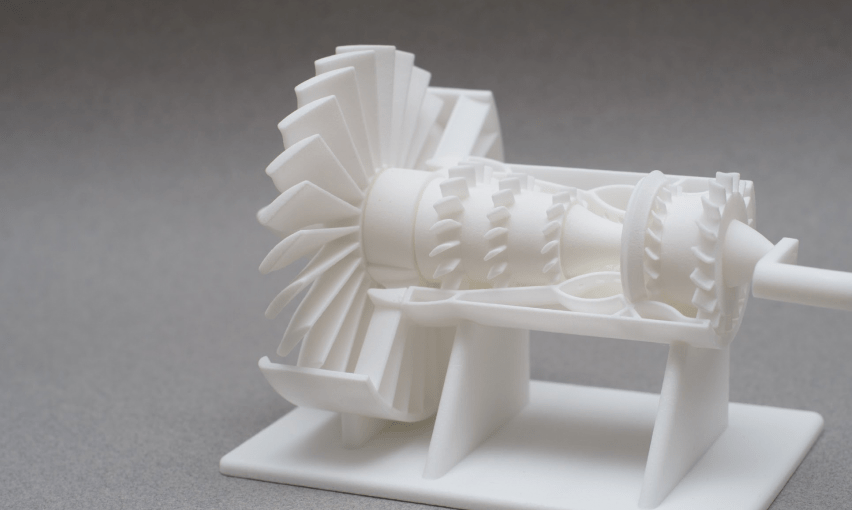
Advantages
Design Flexibility: SLS allows for the creation of complex geometries and intricate internal structures that may be difficult or impossible to achieve with traditional manufacturing methods. It offers design freedom and enables the production of highly customized parts.
No Support Structures Required: Unlike other 3D printing technologies, SLS does not require support structures during the printing process. The powdered material surrounding the part acts as its own support, making SLS suitable for producing parts with complex geometries and internal channels.
Wide Range of Materials: SLS can work with a variety of materials, including different types of thermoplastics, metals, and even composite materials. This versatility allows for the production of functional prototypes and end-use parts with specific material properties.
Batch Production Capability: SLS is well-suited for batch production or small-scale manufacturing. Multiple parts can be printed simultaneously within the build chamber, maximizing productivity and reducing per-unit costs.
Good Mechanical Properties: SLS parts typically exhibit good mechanical properties, including strength, durability, and heat resistance. The sintering process results in parts with high density and good structural integrity.
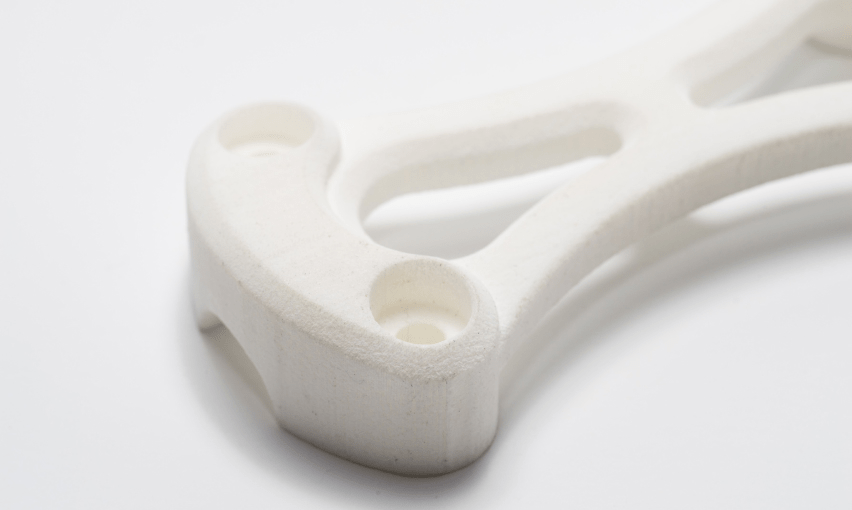
Drawbacks
Surface Finish: The surface finish of SLS-printed parts is generally rougher compared to other technologies like SLA (Stereolithography) or FDM (Fused Deposition Modeling). Additional post-processing steps may be required to achieve a smoother surface finish.
Limited Dimensional Accuracy: SLS has lower dimensional accuracy compared to some other 3D printing technologies. The accuracy can be affected by factors such as the type of material, part size, and printing parameters. Fine details and intricate features may be challenging to reproduce accurately.
Higher Equipment and Material Costs: SLS 3D printers and the associated materials can be relatively expensive compared to some other 3D printing technologies. This cost factor may limit its accessibility for certain applications or industries.
Post-Processing Requirements: After printing, SLS parts often require post-processing steps such as bead blasting, sanding, or surface treatment to improve the surface finish and remove excess powder. These additional steps can add time and labor to the overall production process.
Powder Handling and Safety Considerations: SLS involves the use of powdered materials, which require careful handling and safety precautions. The fine particles can be hazardous if inhaled, and proper ventilation and personal protective equipment are necessary when working with SLS systems.
Design guidelines for SLS
The table below summarises the recommended and technically feasible values for the most common features found in SLS 3D printed parts.
| Feature | Recommended size |
|---|---|
| Unsupported walls | 1.0 mm (0.040 in) |
| Supported walls | 0.8 mm (0.031 in) |
| Minimum detail size | 0.8 mm (0.031 in) |
| Minimum hole size | 1.0 mm (0.040 in) |
| Moving parts | 0.5 mm (0.020 in) |
| Assembly clearance | 0.4 mm (0.016 in) |
| Maximum wall thickness | 20 mm (0.8 in) |
Our other 3D printing processes
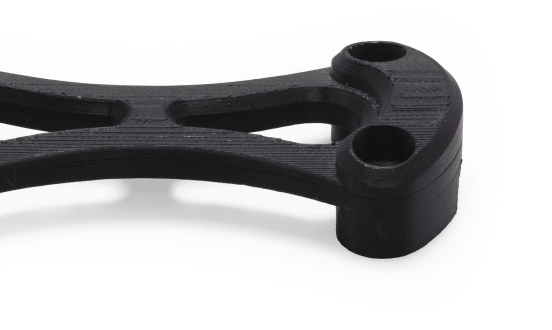
FDM
Fast & affordable prototyping
- Dimensional accuracy of ± 0.05% with a lower limit: ± 0.05 mm
- Lead times from 1 business day
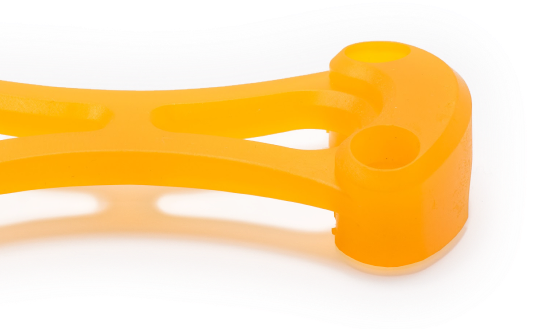
SLA
Visual prototyping
Dimensional accuracy of ± 0.5% with a lower limit of ± 0.15 mm (± 0.006")
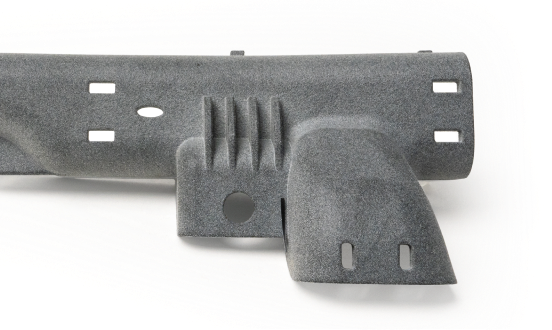
MJF
Functional prototyping & low-run production
Dimensional accuracy of ± 0.3% with a lower limit on ± 0.3 mm
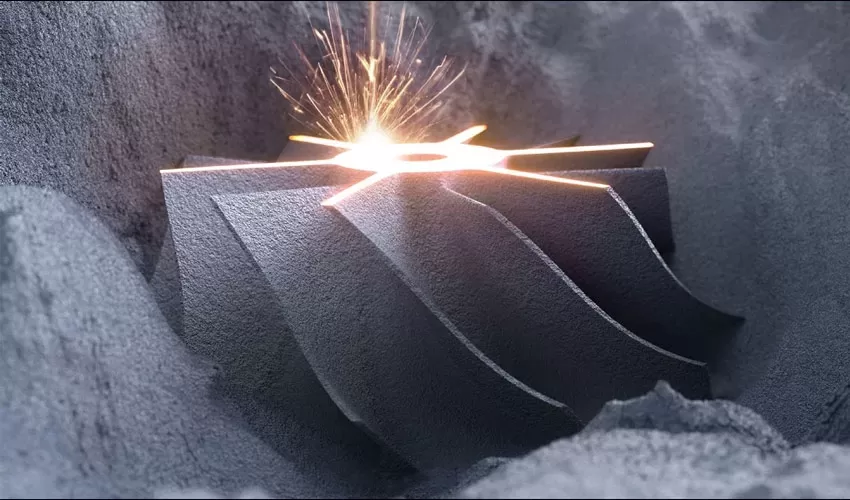
SLM
High-precision metal manufacturing
- Dimensional accuracy of ± 0.1% with a lower limit: ± 0.1 mm
- Suitable for complex and detailed metal parts
- Lead times from 2-3 business days
